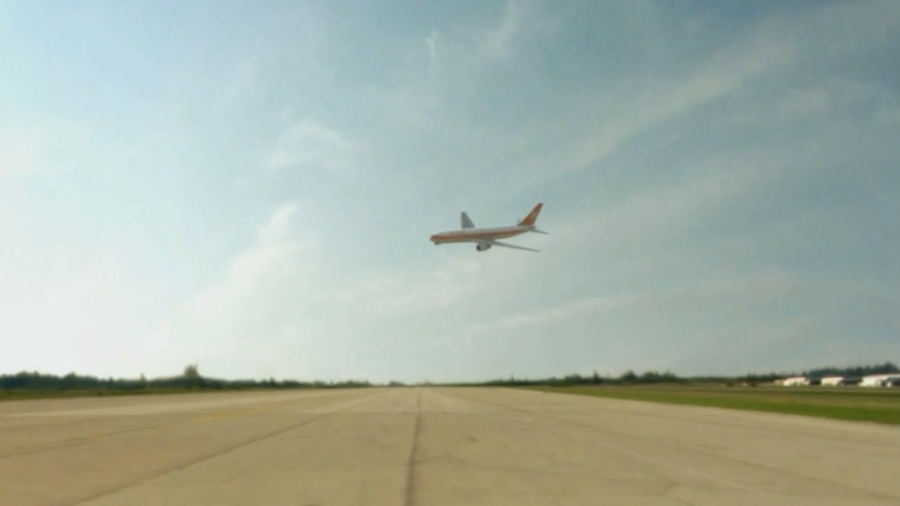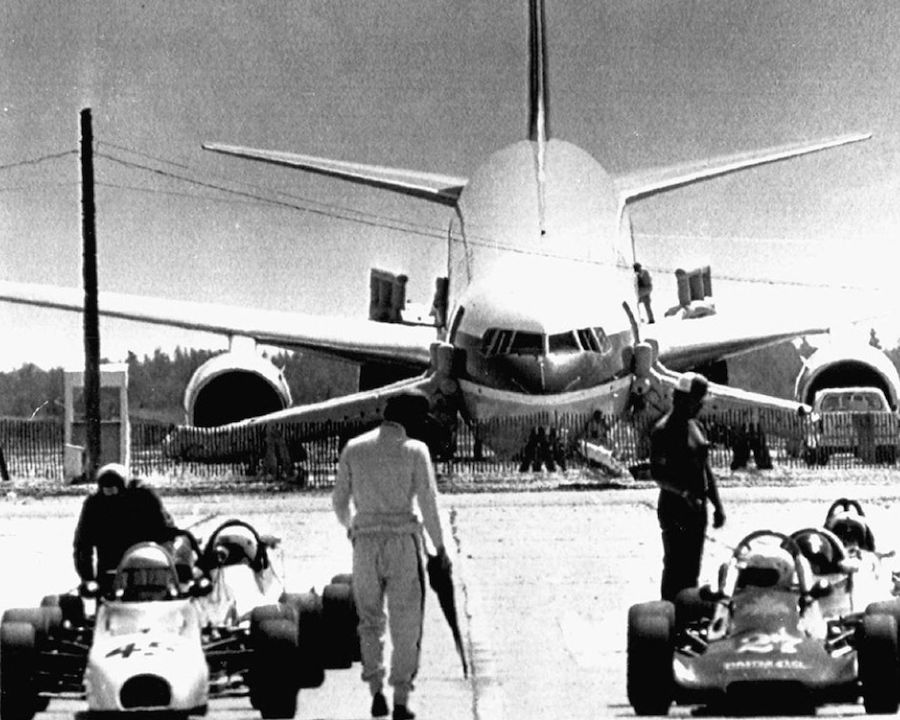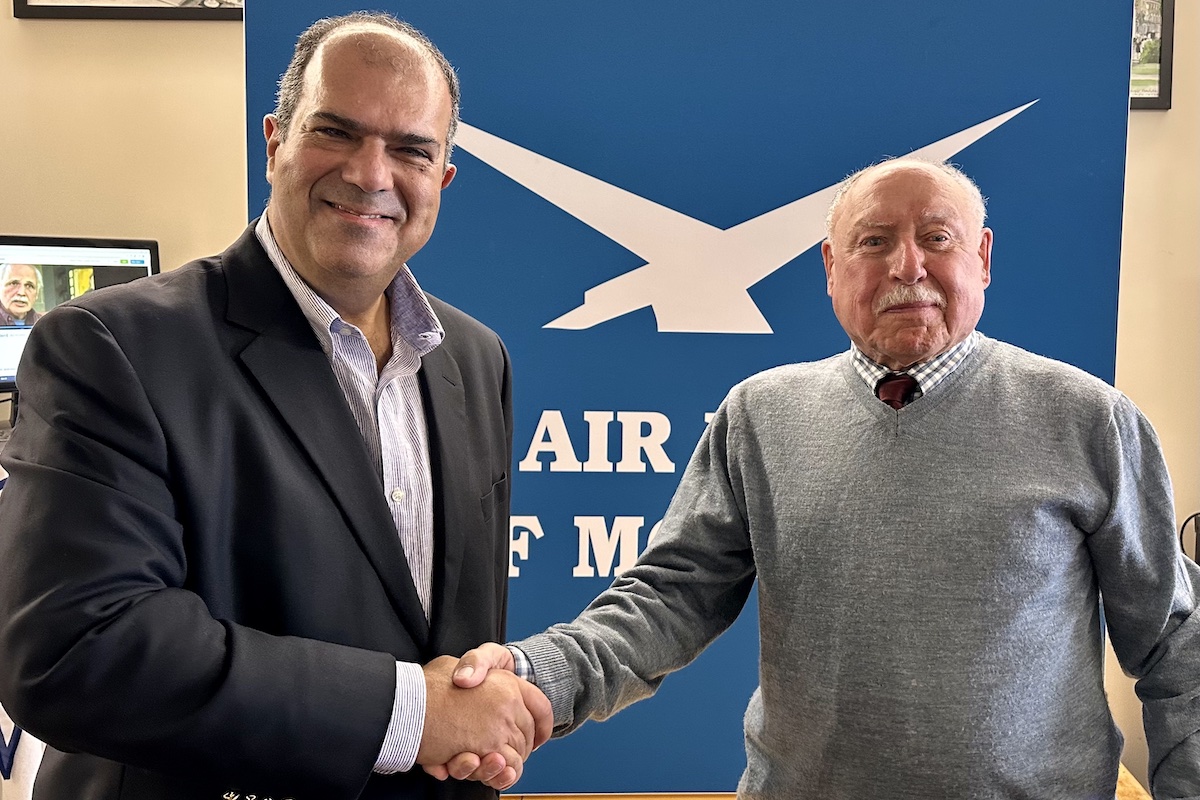Air Canada passenger Flight 174 ran out of fuel at 41,000 feet. Their only hope of survival was for Captain Robert Pearson to do the extraordinary: to land the plane without engines or any power onboard.
It has been four decades since the legendary “Gimli Glider” incident, but Captain “Bob” Robert Pearson remembers it as though it were yesterday.
Appearing recently at a special event in Monaco organised by the Monaco Air League, Bob described how, due to a combination of technical and human errors, the Air Canada Boeing 767 he was piloting ran out of fuel mid-flight at 41,000 feet.
Captain Pearson glided the passenger jet, with 69 souls on board, to a former airfield turned race track where he landed without any major injury to passengers or crew. The aircraft itself was cleared for take-off just two days later.
“I did my job,” Bob casually tells Monaco Life. “I had the responsibility of getting an airplane safely up in the air and safely back down to the ground, and I did it. It was a little difficult, but it worked out. And that plane went on to fly another 25 years.”
What went wrong with Flight 143?
No-one could ever have imagined that a five-month-old Boeing 767 would suffer catastrophic failure mid-flight.
It was 23rd July 1983, and Captain Pearson, who had been flying for 26 years, was manning an Air Canada flight from Ottawa to Edmonton with First Officer Maurice Quintal.
Just after 8pm, they received a warning of low fuel pressure in the left fuel pump. The pilots assumed the fuel pump had failed and switched off the alarm. After all, the Flight Management Computer said there should be plenty of fuel onboard. But in a matter of minutes the right fuel pump also sounded and the pilots decided to divert to Winnipeg, 200 kilometres away.
As they began their descent, the left engine failed. If that wasn’t enough, they heard a loud bang and the ‘all engines out’ alarm blared throughout the cockpit. The entire passenger jet had lost all power.
Falling from the sky
The 767 was one of the first airliners to have an electric flight instrument system, which operated on the electricity generated by the aircraft’s jet engines.
So when both engines stopped, the entire system went dead, and the screens went blank.
“We were put in a new generation airplane with practically no idea of what to do if the computer system failed,” said Bob during a special lunch ahead of the Monaco Air League event. “It was impossible to know how fast we were coming down, we only had four World War Two instruments left: alitmeters, airspeed, horizon and the magnetic compass.”
“It was a wide-bodied aircraft, and you had to be out of your seat to read the damn thing, so I just eyeballed it. We were on top of low stratus cloud all the way down to the south end of Lake Winnipeg. The sun had burned off the little cloud that was left and for the first time you could see the ground. Gimli was back at our 4 o’clock position. I didn’t know how much altitude I had to slip off because I was really just eyeballing it. But it was just like landing a slipper cut.”

Captain Pearson had extensive experience flying gliders, and he used his knowledge to extend the glide of the 767. Thankfully, the ram air turbine provided some hydraulic support for him to be able to manoeuvre the plane.
Bob describes having absolute tunnel vision in those crucial minutes after the passenger jet began to literally fall out of the sky. It was a life-defining moment that has been immortalised in a book and a two-part television series released in the 1980s.
The unbelievable manoeuvre that saved 69 lives
The Gimli Glider story was also retold in a riveting Air Crash Investigation TV episode in 2008, a section of which was played at the Monaco Air League event (see video below). It shows how Captain Pearson, in an effort to control the plane’s speed and descent, decided to conduct a manoeuvre called a slide slip – something that is practically unheard of in commercial airliners but sometimes used by glider pilots. Sideslipping involves crossing the controls and forcing the aircraft into a sideways freefall, allowing it to drop quickly.
This cross control pushed the aircraft sideways into the oncoming air.

There were even more lives at risk
While the runway was clear enough, what the pilots didn’t see at Gimli were the families that had set up camp along the runway. The airstrip, which First Officer Quintal had trained at years before, had since been converted into a drag racing strip, and the airfield was full of members of the local sports racing club who were camping out on the weekend.
Captain Pearson had to maintain a crucial balance – he had to slow the plane down enough to land safely, but too much and the plane could lose its lift and plummet to the ground.
Miraculously, he straightened the Boeing 767 in the final seconds and landed on the runway, 17 minutes after running out of fuel. The front landing gear gave way, two tires blew out, and the nose scraped along the tarmac. A guardrail installed in the middle of the strip slowed the aircraft down and prevented it from ploughing into civilians.
“When we stopped, my knees should have been shaking but we did the evacuation and got everybody off, then I got back onboard and thought, I can’t let this brand new airplane burn up, so I went to look for an extinguisher in the flight deck and got overcome with smoke… then the car club people came with big fire extinguishers and by the time the fire department arrived, the chief shook my hand and gave me his business card.”
Bob says that he never suffered nightmares or PTSD after the incident. “I don’t think it was invented then,” he laughs.
In fact, he continued to fly jet airliners for another 12 years.

Why the Boeing 767 ran out of fuel mid-flight
The Fuel Quantity Information System computer on Flight 143 was malfunctioning, so ground crew in Montreal loaded the fuel manually using calculations involving the gravity of jet fuel.
But the Boeing 767 was the first metric plane to fly in Canada and they used pounds/litre, not the all-metric kilogram/litre required for the new 767. The plane had half the fuel it needed to reach Edmonton.
An investigation of the accident faulted the airline for not reassigning the responsibility for calculating the fuel load when use of a flight engineer became unnecessary with the new Boeing 767, which was designed to be flown by a two-pilot crew. It also confirmed that the recent change from the Imperial measurement system to metric resulted in a series of miscalculations as to how much fuel was actually aboard the aircraft before the flight.
Captain Pearson and First Officer Quintal were reinstated to Air Canada after a six-month suspension, and a number of recommendations were made following the incident. Two years later, the pilots were awarded the first-ever Fédération Aéronautique Internationale Diploma for Outstanding Airmanship.
Captain Pearson served as an insipiration
“Maybe six months after Gimli, I was operating a flight from Heathrow to Montreal and I met a senior Scandinavian Airlines captain who was in charge of pilot training. He said that within three weeks of the Gimli landing, all the Scandinavian Airlines pilots and SAS were training in powerless landings,” says Bob.
Captain Pearson is not the first pilot in the world to glide a passenger airline to safety after full engine failure. Hundreds of lives have been saved thanks to the manoeuvre, and Bob believes all pilots should obtain glider training. “Flying a glider is easy, you’re a bird, it’s elementary. You can coordinate your judgment without worrying about an engine. We used to have a competition in the 60s where we would pin a white handkerchief down on the runway and you had to land a wheel on that handkerchief, or as close as you could, with power.”
This year marks the 40th anniversary of the Gimli landing and a Gimli Glider museum, which is dedicated to telling this unique Canadian aviation story, will welcome back Captain Robert Pearson to commemorate this remarkable feat.
To watch the full Air Crash Investigation – Gimli Glider video, see below…
Sign up for the Monaco Life newsletter. For the latest news, follow us on Facebook, Twitter, and Instagram.
